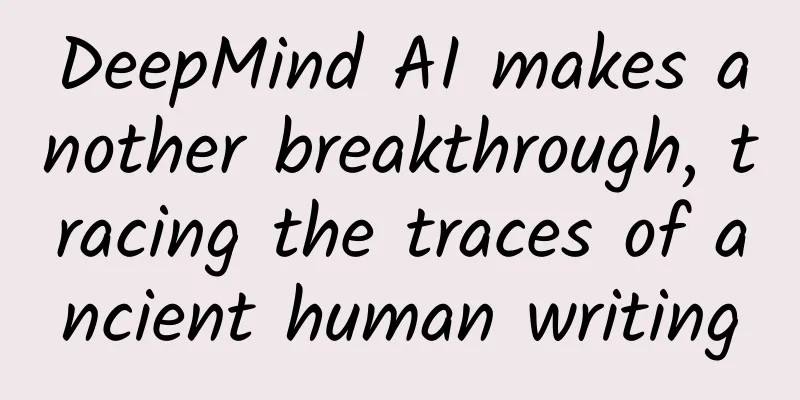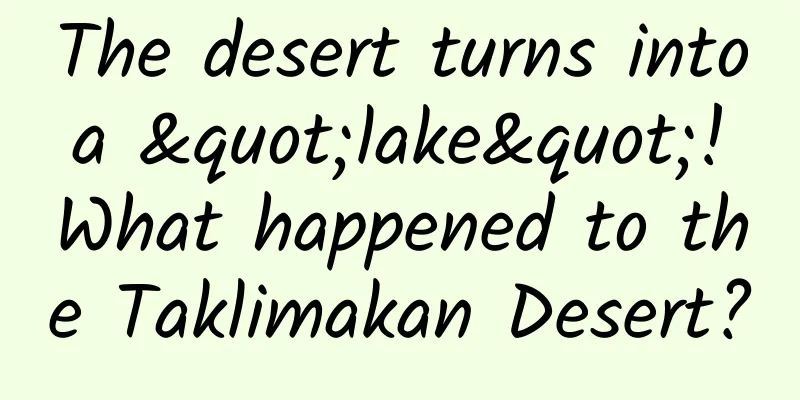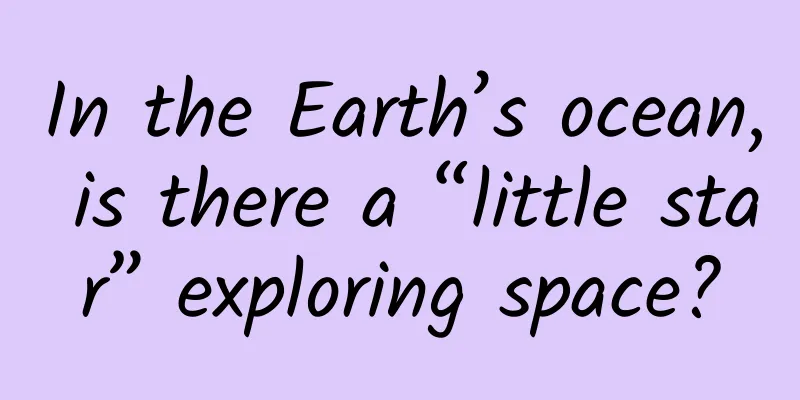DeepMind AI makes another breakthrough, tracing the traces of ancient human writing

|
Written by: Yang Xiao It is undeniable that artificial intelligence (AI) is accelerating changes in entire industries. From facial recognition and voice assistants that are common in daily life to protein structure prediction and nuclear fusion control in the basic science field, artificial intelligence applications are now flourishing. And this time, it aimed at the inscriptions that recorded history. Figure | AI may have surpassed humans in restoring ancient inscriptions (Source: Nature) Today, a joint research team from DeepMind, the University of Venice, Harvard University and their collaborators proposed a deep neural network that can restore, locate and date ancient Greek inscriptions - Ithaca (named after the Greek island in Homer's epic "The Odyssey"). The related research paper, titled “Restoring and attributing ancient texts using deep neural networks”, was published as a cover article in the authoritative scientific journal Nature. The results of the study show that when Ithaca was used alone to restore damaged inscriptions, the accuracy rate could reach 62%, while the historians involved in this study only predicted an accuracy rate of 25%; when Ithaca "cooperated" with historians, this number could be increased to 72%. Ithaca was also able to determine the original location of the inscriptions with 71 percent accuracy, and the dating was within 30 years of the range proposed by historians. At the end of the paper, the researchers stated that the research method is applicable to all disciplines related to ancient texts, such as manuscript studies, numismatics and papyrology, and to any language, ancient or modern. This research result may unleash the potential for collaboration between artificial intelligence and historians and enhance our understanding of human history. Unearthing lost history In a narrow sense, the birth of human writing marks the beginning of history. Primitive writing is a written symbol used by humans to record specific things and simplify images. It is crucial for humans to understand past human civilization and the current world. Early characters existed in the form of pictures, some of which represented meanings through shapes, and some of which represented sounds through shapes. Pictographic characters belong to the category of expressing meaning through shape and have little to do with pronunciation. Chinese characters gradually evolved from pictographic characters. Figure|The evolution of different hieroglyphs (Source: Wikipedia) The pictographic scripts that used shapes to represent sounds, such as ancient Egyptian, Roman and Latin, have also gradually evolved into phonetic symbols, namely foreign letters, over the long course of human history. Different foreign letters can be combined into different foreign characters. Figure|Fonts and styles of different languages (Source: Wikipedia) Therefore, in order to better explore the history of ancient civilization, studying the inscriptions that the ancients wrote directly on materials such as stone, pottery or metal and have survived to this day is a common and effective research method. For example, more than 2,500 years ago, the ancient Greeks began recording everything from leases and laws to calendars and prophecies on stone, pottery, and metal, which gave historians a detailed understanding of the Mediterranean region. Unfortunately, this record is incomplete, and over the centuries many of the inscriptions that have survived have been destroyed, removed from their original locations, or trafficked. Moreover, due to various external reasons, these texts are difficult to decipher and the time of writing is uncertain. Although historians can now reconstruct the missing texts using existing methods, current dating techniques (such as radiocarbon dating) cannot be used on these materials. For the above reasons, these inscriptions are difficult and time-consuming to interpret. AI assistant for historians How to solve the above problems? Nowadays, AI may do better. Currently, natural language processing (NLP) models are often trained using large numbers of words because the order in which these words appear in a sentence and the relationship between them can provide additional meaning. For example, "once upon a time" appearing together is more meaningful than individual characters or words. For this study, Ithaca was trained on the largest digital dataset of Greek inscriptions available from the Packard Humanities Institute. To ensure that the Ithaca model can still be trained properly when using missing characters, the researchers fed it both words and single characters as input. The sparse self-attention mechanism at the heart of the model evaluates both inputs in parallel, allowing Ithaca to evaluate the inscription as needed. The results show that Ithaca's design decisions and visualization assistance can help historians restore inscriptions more easily. The powerful potential of human-computer collaboration can help better restore historical truth and even help resolve some controversial issues. For example, historians disagree about the date of a series of important Athenian decrees, issued during the lifetimes of prominent figures such as Socrates and Pericles, which were thought to have been written before 446/5 BC. Ithaca, along with historians, updated this date to 424/3 BC. Figure|The inscription records the oath of allegiance of Chalcis to Athens. (Source: Acropolis Museum) Although these two numbers may seem insignificant in the context of history, these decrees are crucial to our current understanding of the political history of ancient Athens. In addition, historians have also reconstructed, together with Ithaca, a decree in Greek history concerning the Acropolis. Figure | The restored inscription records a decree regarding the Acropolis of Athens in 485/4 BC. Ithaca’s architecture focuses on collaboration, decision support, and explainability. While Ithaca alone can only restore damaged inscriptions with 62% accuracy, when working in tandem with historians, it can improve human accuracy from 25% to 72%. This change proves that Ithaca has a strong synergy effect. "Scholars will not be replaced. Instead, Ithaca will be like a hound, looking for clues for them but not making the final decision," said Charlotte Roueché, professor emeritus at King's College London, in a commentary. Roueché argues that this progress should not be interpreted as a threat to centuries-old traditions, but rather as a complement to them. AI should not make scholars redundant, but rather challenge their understanding of what they thought they knew. Original link: Source: Academic Headlines |
>>: How could a reinforced concrete bridge across the Taiwan Strait be easily destroyed by the wind?
Recommend
How to create a hit on Douyin?
In July this year, the official TikTok revealed a...
Spring Festival promotion cannot be separated from these 7 major themes
The Spring Festival is one of the most important ...
Guangzhou Mobile: Portable work platform [WeChat Enterprise Account Case]
Guangzhou Mobile Workstation is a portable work p...
Bilibili Operation: How to improve community interaction?
Compared with other content platforms, Bilibili i...
What’s the innovation behind Google’s new Android smart lock?
On March 23, according to foreign media reports, ...
What is the life of astronauts in the "Tiangong"? You will be more respectful after understanding it
On the morning of June 5, three astronauts, led b...
LG's poor performance in China may make it the next brand to fall
The industry that is most deeply touched by the p...
Zhihu operation and promotion: the optimal solution for Zhihu recommendation algorithm!
I want to tell everyone: Don’t just focus on Baid...
It’s heartbreaking that a woman fell from a building after being cyberbullied. How should we build a “psychological firewall” in the face of verbal abuse?
It’s heartbreaking that a woman fell from a build...
Revealed! How does a plastic bottle bury hundreds of lives?
A hermit crab that found a bottle of snail shells...
The rules for Douyin live streaming marketing hits in the first half of 2020
How to use Douyin live streaming marketing? As a ...
Who cut the budget?
One phenomenon is that nowadays, clients are incr...
20 new tricks Facebook is using to eat up the Internet: Do you want to learn from them?
Facebook is most afraid of users leaving. It keep...
Six rules of user retention rate, tell you all at once
Please think before reading: What is user retenti...
Cadillac Minister Feng Dan calls for anti-counterfeiting on Pinduoduo: refurbished cars, fakes
"Refurbished cars, fakes." Shanghai'...









